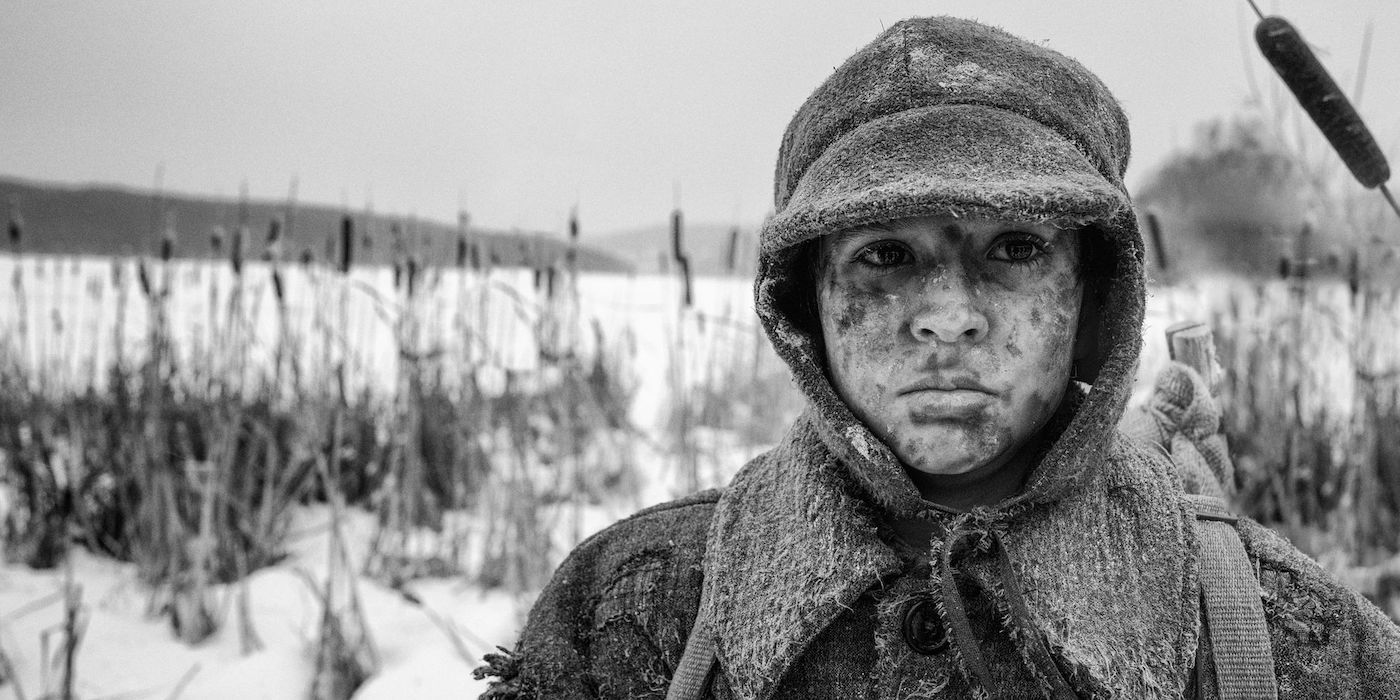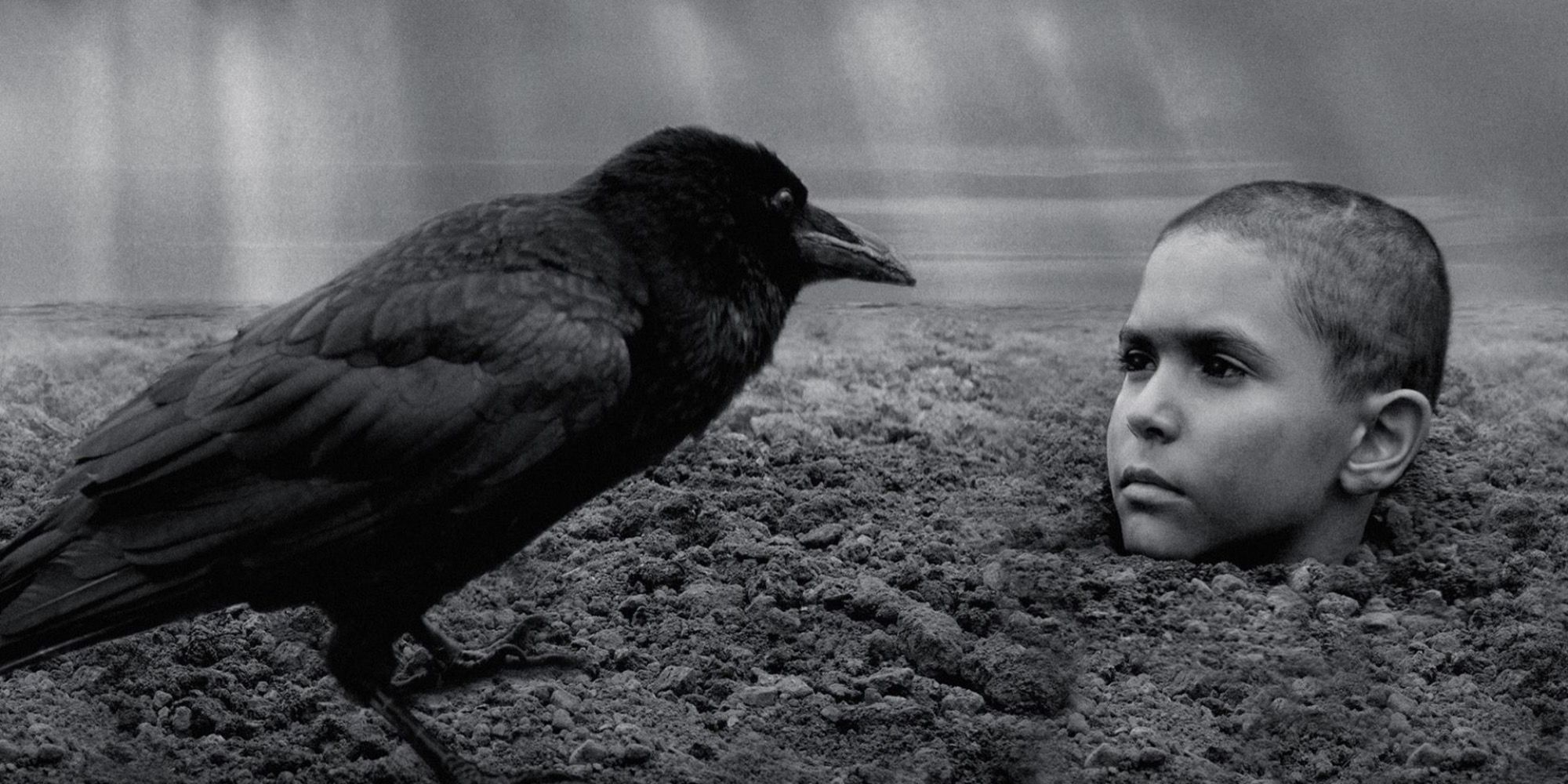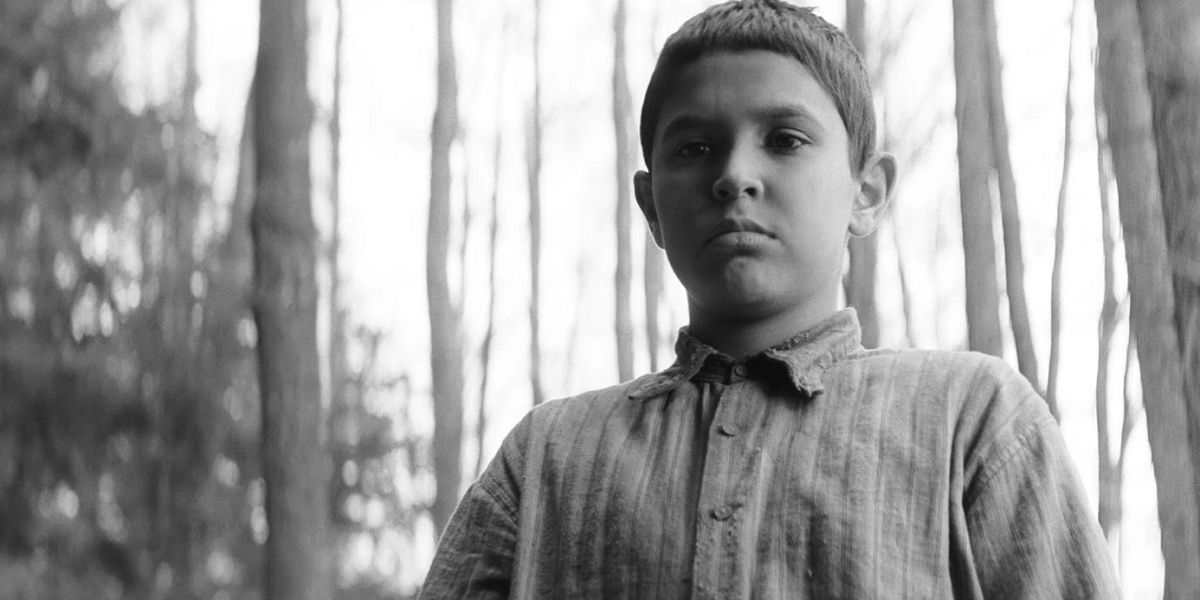In the 2019 adaptation The Painted Bird, based on the controversial Holocaust memoir by Jerzy Kosinky, the sanctity of life and innocence holds little to no value. To summarize, The Painted Bird is a grueling freefall into the abyss, with a child protagonist navigating an unnamed, hostile country and encountering different degrees of evil: moral, apathetic, or conscripted. Vàclav Marhoul’s near-mythical recreation of Kosinky’s haunting source material might be the most harrowing movie you’ve ever seen. A fairytale without the possibility of a ‘free-lunch’ otherworld or a reward for the suffering endured. But to accuse the film of only resorting to knee-jerk shock tactics does it a disservice. It is unapologetically singular in style and execution and while it does share storytelling tropes with Schindler’s List, Bent, and The Pianist, it examines the atrocities of war from a different angle.
Loosely based on a Nazi-occupied Poland (the Czech director steers clear of naming the country, employing a fictitious Interslavic language) the movie is a spiritual successor to the likes of Federico Fellini’s La Strada, Otto Preminger’s Bunny Lake is Missing, Victor Erice’s The Spirit of the Beehive and Guillermo Del Toro’s The Devil’s Backbone. In a post-war moral vacuum, fascism has tainted everything, corrupting all it touches, magical thinking, primitivist customs, and aberrant humanity have gained a foothold. The Painted Bird depicts innocence and childhood under duress, a world where the majority of people are fundamentally broken and abject horror is the order of the day. To be clear: The Painted Bird rivals Stanley Kubrick’s A Clockwork Orange, Gaspar Noes’ Irreversible, or Virgine Despentes Baise Moi in how legitimately contentious and provocative the movie really is. You have been warned…
What Is The ‘Painted Bird’ About?
In the opening scenes of The Painted Bird a boy and his pet are chased through a warren of laneways, surrounded by dead trees in a purgatorial wasteland somewhere seemingly outside of time. The viewer wonders why the boy is running through this existential terrain — until they catch up with him and we're offered the first appalling glimpse into this world. Joska (Petr Kotlár) is burying his pet and his grandmother is chastising him. Their interaction (like many in the movie) is one-sided, with vocalized pauses and the (one-sided) conversation is one which ignores anticipated emotion. A fire results in the child being left alone and destitute and at the mercy of peasant villagers, who brand him a witch and a vampire and want to execute him. Olga (Alla Sokolova), a witch doctor and harridan saves Joska and has him aid her in delivering help to ailing villagers. Joska essentially becomes a slave boy whose only purpose is to entertain and be subservient to the adults he comes into contact with. It is a Nietzschean cycle of power and abuse which the child has no choice but to submit to.
Udo Kier’s Miller is another monstrous surrogate with a contradictory nature. In one scene he is stroking a cat affectionately, the next gouging his wife’s (Michaela Dolezalova) lover’s eyes out with a spoon. In a display of childlike innocence, Joska returns the victim’s eyes –the childish innocence of returning gouged-out eyeballs to the blind victim is equally comical and harrowing. The sympathetic Priest (Harvey Keitel) unwittingly delivers Joska to the innocuous Garbo (Julian Sands), unaware Garbo is a sadistic pedophile. Garbo’s much-deserved demise feels like it belongs in a Brothers Grimm fairytale.
An aura of superstition and mystery surrounds the child, Udo Kier’s eye-gouging wife-beater believes the boy will bring misfortune. Officer Hans (Stellan Skarsgård) spares the boy and Joska later develops a father-son dynamic with Russian sniper Mitka (Barry Pepper). The adults in the movie’s notions don’t accord with how they act, and though some object to the treatment of the boy, ultimately this is a movie exploring the heart of darkness. Even Keitel’s well-meaning Priest enables abuse and horror, albeit unknowingly. It doesn’t end well for the characters who adhere to any kind of moral framework – this may seem like a cynical view, but it is important to highlight power and war corruption absolutely. The historical basis of The Painted Bird cannot be overlooked, to do so would deny the reality of history and its collective trauma. Is the movie a worthwhile piece of art? Or a cinematic lesson in nihilism?
‘The Painted Bird’ Is Beautiful, Despite Its Horrors
A few things elevate The Painted Bird and make it slightly less horrifying than potential audiences might expect. It has stunning camerawork, Vladimir Smutny’s frame after frame of evocative, eerie cinematography, a monochromatic color palette, and crowd-gathering sequences with the violent, paranoid vibe of Ken Russell’s The Devils. The visuals add a fantastical element, combined with Punch and Judy-style grotesquery, it somewhat offsets the brutality. A clever tactic on Marhoul’s part to conjure up a vision of Hell we (for the most part) witness through the fish-eyed perception of childhood.
The movie has an unusual narrative structure, broken up into Tarantino-like sections as opposed to a three-act script. The transition is faithfully literary. Intermittently, there are scenes explicitly related to the Holocaust – jarring scenes painfully emphasizing the barbaric history. Even though the director employs an episodic way of telling the story, tonally it stays the same and there is nothing uneven with how the narrative is constructed. Not since Pan’s Labyrinth have audiences seen the visceral nature of war overlap with childhood to a chilling effect. Newcomer Petr Kotlar's staggering performance is heartbreakingly bleak, the subtext of him suppressing his humanity gives the film another layer of poignancy.
There is hope ingrained in Joska, despite the fact that it never materializes. Kotlár’s performance is mostly silent, and we follow him as he languishes in an existence of nightmare logic, a world populated by shadowy figures and constant threats. Hatred and fear drive the characters in the film to commit unspeakable acts. The Painted Bird lost much of the appeal it held for readers and artistic merit when Kosinki was exposed as a fraud and literary hoax. The author was heavily criticized, widely condemned, and even faced allegations of plagiarism. The validity of The Painted Bird and the author were called into question and it ended in the author’s tragic death. The craft and style of The Painted Bird is undeniably brilliant, even the most jaded cinephiles will discover something remarkable about the movie, and this makes Marhoul's efforts worthwhile. Like many of its extreme predecessors, movies like The Painted Bird are a necessary evil. What do we learn if we shield our eyes from the horror?



